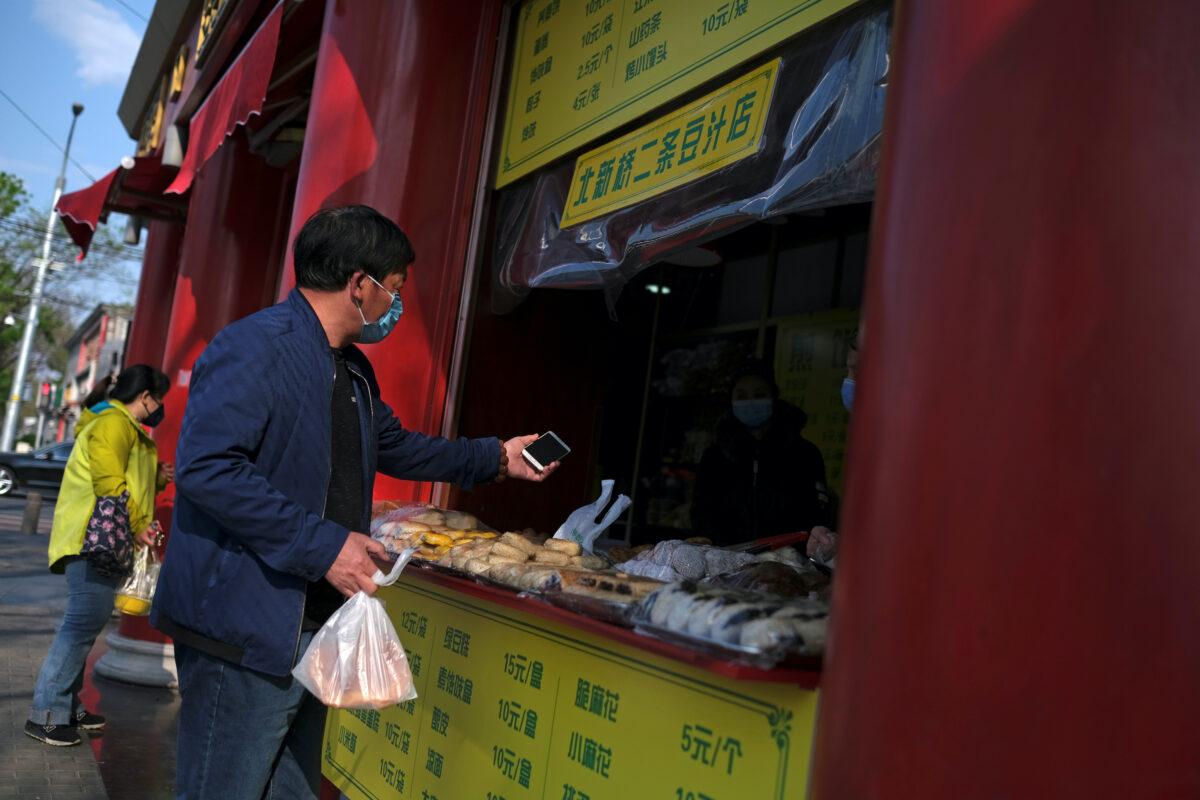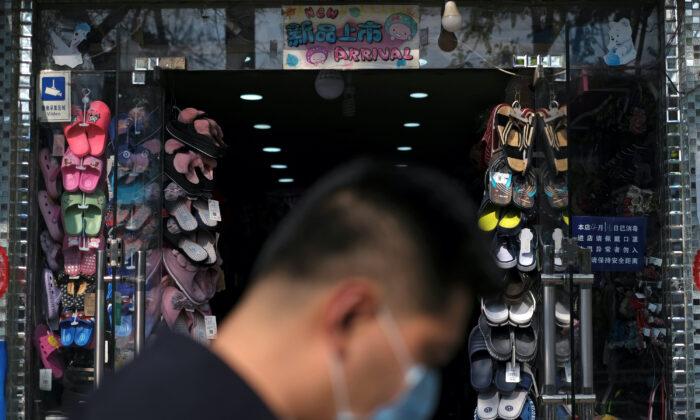BEIJING—China’s economy shrank for the first time in almost three decades of records in the first quarter, as the CCP virus paralyzed production and spending, raising pressure on authorities to do more to stop mounting job losses.
Gross domestic product (GDP) fell 6.8 percent in January-March year-on-year, official data from the Chinese Communist Party (CCP) showed on Friday—slightly larger than the 6.5 percent decline forecast by analysts, and reversing a reported 6 percent expansion in the fourth quarter of last year.
The official figures reported a much smaller-than-expected decline in factory production in March but significant slow-down in consumer consumption.
Analysts say Beijing faces an uphill battle to revive growth as the global spread of the virus devastates demand from major trading partners, while domestic consumption also remains under pressure.
“First-quarter GDP data is still largely within expectations, reflecting the toll from the economic standstill when the whole society was on lockdown,” said Lu Zhengwei, Shanghai-based chief economist at Industrial Bank.
“Over the next phase, the lack of overall demand is of concern. Domestic demand has not fully recovered as consumption related to social gatherings is still banned while external demand is likely to be hammered as pandemic spreads.”
On a quarter-on-quarter basis, GDP fell 9.8 percent in the first three months of the year, China’s National Bureau of Statistics said, just off expectations for a 9.9 percent contraction, and compared with 1.5 percent growth in the previous quarter.
Financial markets did not react significantly to the contraction, which was broadly in line with consensus expectations.
Statistics bureau spokesman Mao Shengyong told a press briefing after the data that China’s economic performance in the second quarter is expected to be much better than in the first.

However, weaker domestic consumption, which has been the biggest growth driver, remains a concern, as incomes slow. Much of the world is feared to fall into recession.
“We are hesitant to think that this is just a one-quarter event, Q2 will also likely be lower than expectation,” said Ben Luk, senior multi-asset strategist at State Street Global Markets in Hong Kong.
“To offset weakness in external demand, we will see some policy support later this month or early May.”
Retail sales reported a 15.8 percent fall in consumption, which was larger than expected.
Pandemic Impact
Economists’ forecasts for the first-quarter GDP ranged widely given the many uncertainties around the pandemic’s economic and social impact in China.Of significant concern for policymakers is social stability among its 1.4 billion citizens, millions of whom migrate from rural areas to cities to find work each year.
China’s urban jobless rate was at 5.9 percent in March, down from 6.2 percent in February, suggesting the pain in the labor market is yet to be seen in official numbers.
However, analysts expect nearly 30 million job losses this year due to stuttering work resumptions and plunging global demand, outpacing the 20-plus million layoffs during the 2008-09 financial crisis.
Beijing has pledged to take more steps to combat the impact of the pandemic, as mounting job losses threaten social stability.
The central bank has already loosened monetary policy to help free up the flow of credit to the economy. Still, the easing so far has been more measured than during the global financial crisis.
The government will also lean on fiscal stimulus to spur infrastructure investment and consumption, which could push the 2020 budget deficit to a record high.
For 2020, China’s economic growth is set to stumble to 2.5 percent, its slowest annual pace in nearly half a century, a Reuters poll showed this week.
Epoch Times staff contributed to this report.





